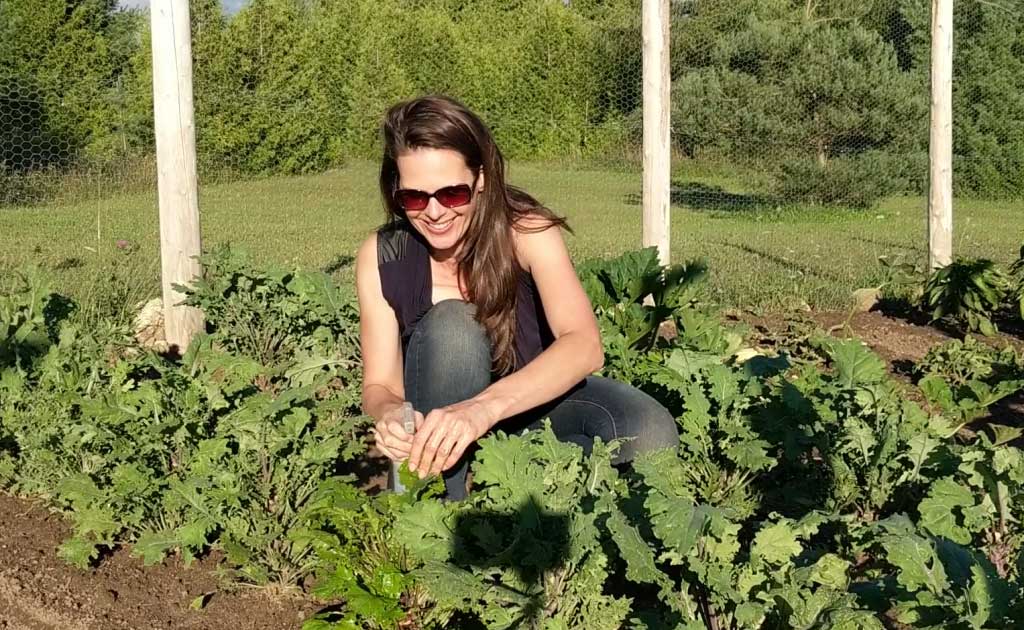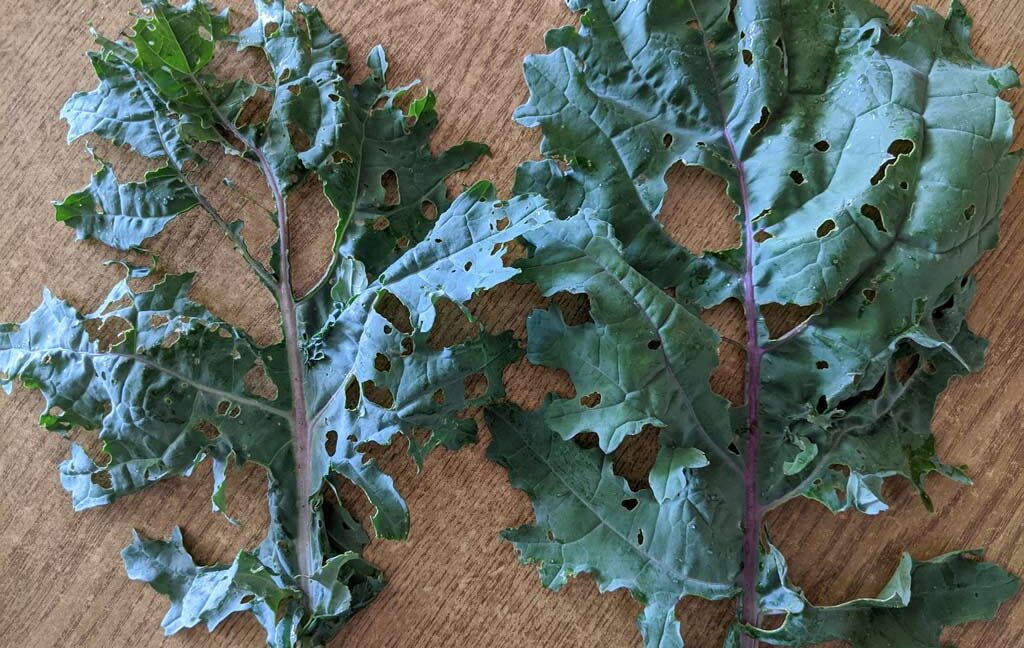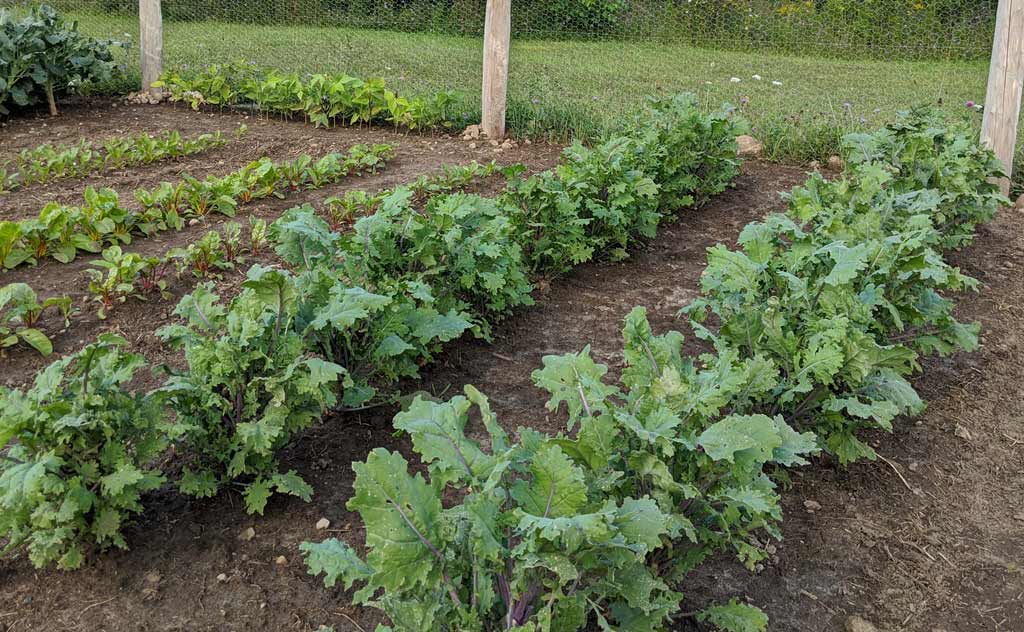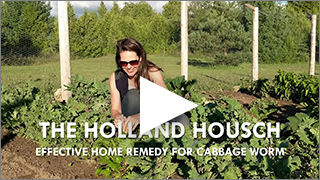
CELIA SPRAYING THE KALE PLANTS WITH A HOMEMADE SOLUTION
Cabbage worms are a common pest in the vegetable garden and a lot of gardeners’ struggle with them. This is what I learned when I had my own first encounter with the little beasts this past July. They were having a field day in my kale plants and I was unable to control them by picking them off the leaves. Every day my kale looked more and more skeletal as the cabbage worms ate their way through my kale patch.
Cabbage worms hatch from eggs laid by the cabbage butterfly—small white butterflies that you will see dancing around the garden. When the larvae of the cabbage butterfly emerge from the egg, it starts feeding on the surrounding leaves. As it matures it feeds on more plant matter.
I love kale! I use it in my smoothies, in my salads, and I juice the leaves a few times a week; so I was pretty devastated when the cabbage worms were eating, not only my kale, but the newest and most tender leaves they could find. I was determined to figure out how to get the cabbage worm infestation under control.

KALE LEAVES THAT HAVE BEEN DAMAGED BY THE CABBAGE WORM
After some extensive internet research, I narrowed in on a few organic methods for cabbage worm removal. I chose these methods because they made sense for my situation. My kale patch was infested with worms and based on how fast they were eating the kale leaves I knew within a few weeks the entire crop would be inedible. I was also looking for a method that was human and garden friendly.
Here is the approach I took… and I was thrilled with the results.
Cabbage Worm Removal
1. The first thing that I did was cut back all the kale leaves right back to the main stem of the plant. When I was done, the only thing left was the stem of the kale plant and a few small baby leaves that were intact and without holes.
2. I put all the kale leaves in black garbage bags (I filled two of them). I tied off the top of the garbage bags and left them in the hot sun to bake for a few days. This would kill any insects in the bag.
3. I checked the soil around the kale stems for any cabbage worms that may have dropped off during the leaf removal.
4. I watered the kale patch very well.

THE KALE PATCH BEFORE CUTTING BACK THE LEAVES
Spray Solution for Cabbage Worm Prevention
5. I made a spray solution that I found on the Bob Villa website in an article called How to: Get Rid of Caterpillars.
6. I sprayed each of the kale stems thoroughly with the spray solution and repeated this every second day for the first week. After a heavy rain I sprayed again, as the rain will wash off the solution.
7. In the second week there was significant new leaf growth. I continued with my spraying ritual, reducing it to every third day, and made sure to coat the front and back of the new leaves.
8. In the third week I reduced my spraying to once per week, and after a heavy rain.
Recipe for Spray Solution
Mix in a spray bottle:
1 tbsp molasses
1 litre of warm water
Shake the molasses and water well to melt the molasses into the water.
Add 1 tsp of dish soap to the molasses mixture (I used an eco-friendly dish soap that I had in the house).
Shake the spray bottle to combine all the ingredients.

THE KALE PATCH THREE WEEKS AFTER CUTTING BACK THE LEAVES
Fast forward three weeks and I am harvesting kale leaves without any sign of cabbage worms; And the best part, is that because I cut my kale patch back so hard the only thing that I am harvesting is beautiful baby kale. I have regained control over the kale crop as well as the cabbage worm.
I know all too well how frustrating it can be to watch your hard work go up in smoke. I raised my kale plants from seeds started this past April indoors. All the watering, transplanting, fertilizing, planting, and watering that goes into one plant is truly awesome. I can sympathize with everyone else going through this experience and wanted to share my journey in the hopes that it helps someone else.
Happy Gardening!!








